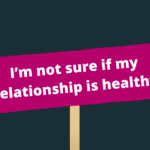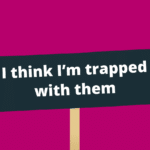Domestic abuse provision: Routes to Support
These dashboards use data from Routes to Support.
- Information on service types and refuge spaces comes from snapshots taken in May each year from 2010. We can see net change only and not the number of services changing provider as part of the commissioning process as we do not show fluctuations in number during the year.
- Services available can vary greatly in terms of size of the service and the numbers and support needs of the survivors they can support.
- Women accessing refuge services travel from one part of the country to another and these vital services form a national network and this should be taken into account when looking at the numbers of services and spaces regionally or locally.
For more information on service provision and changes over time see Survival and Beyond: The Domestic Abuse Report 2018, The Domestic Abuse Report 2019: The Annual Audit and The Domestic Abuse Report 2020: The Annual Audit
This section shows:
- The number of each service type available to women in England.
- How these numbers change from year to year.
- A breakdown of these numbers for each of the nine government regions in England.
The information used comes from snapshots taken from Routes to Support on 1st May each year from 2010 onwards.
The national network of refuge services in the UK offers a wide range of support and different accommodation types for women and children needing to move from their home in order to be safe. During the year 2018/19 we estimate that refuge services in England supported 11,489 women and 13,787 children.
A refuge service offers accommodation and support only for women experiencing domestic abuse which is tied to that accommodation. The address will not be publicly available. It will have a set number of places. Accommodation can be in a range of shared housing, self-contained units and dispersed housing in order to meet the diverse needs of survivors and their children. Residents will receive a planned programme of therapeutic and practical support from staff and access peer support from other residents.
For refuge services data on the number of units (bed spaces) can give us an idea of how their capacity changes over time. One unit refers to accommodation for one woman or one woman and her children, units can vary in size and the number of children they can house, they can be in shared houses, self-contained units or dispersed accommodation.
This section shows:
- The number of refuge spaces in England over time compared to the Council of Europe minimum recommendation of one space per 10,000 population and includes a regional breakdown.
Data on refuges spaces comes from snapshots taken from Routes to Support on 1st May each year from 2010 onward.
Availability of spaces for individual women depends on a number of factors including size of family, geographical location of vacancies and the needs of the woman (and any children) seeking refuge. We know that demand for refuge spaces continues to be higher than the availability, an issue explored in detail in “Nowhere to Turn” which uses findings from Women’s Aid’s No Woman Turned Away project and The Domestic Abuse Report series which uses findings from the Annual Survey, Routes to Support and On Track. We also know that not all spaces are available or accessible to all women, as shown in the data on refuge vacancies.
This section shows:
- The proportion of refuge vacancies available to women with two and three children, those with mobility needs and those with no recourse to public funds.
Information on vacancies comes from all refuge vacancies in England posted to Routes to Support during the years 2016/17, 2017/18, 2018/19 and 2019/20.
The tables in this section look at where services for women also support men. This is not an exhaustive list of the services available to male victims or perpetrators, rather these numbers are for services primarily offering support to women who also work with male victims.
If you are looking for support for male victims or details of available support services, please call the Men’s Advice Line on 0808 8010327.
At May 2018, 170 out of 363 entries (46.8%) had one or more service for men including 32 out of 271 refuges (11.8%) which can now accommodate men.
Of the 171 refuge spaces available to men 148 are available to either men or women dependent on need and these are included in the numbers of spaces for women on the previous pages.
The tables in this section show:
- The number of each service type which available to men in England.
- How these numbers change from year to year.
- The number of refuge spaces available to men from 2018.
Data on refuges spaces comes from snapshots taken from Routes to Support on 1st May each year from 2010 onward.
These dashboards use data from Routes to Support.
- Information on service types and refuge spaces comes from snapshots taken in May each year from 2010. We can see net change only and not the number of services changing provider as part of the commissioning process as we do not show fluctuations in number during the year.
- Services available can vary greatly in terms of size of the service and the numbers and support needs of the survivors they can support.
- Women accessing refuge services travel from one part of the country to another and these vital services form a national network and this should be taken into account when looking at the numbers of services and spaces regionally or locally.
For more information on service provision and changes over time see Survival and Beyond: The Domestic Abuse Report 2018, The Domestic Abuse Report 2019: The Annual Audit and The Domestic Abuse Report 2020: The Annual Audit
This section shows:
- The number of each service type available to women in England.
- How these numbers change from year to year.
- A breakdown of these numbers for each of the nine government regions in England.
The information used comes from snapshots taken from Routes to Support on 1st May each year from 2010 onwards.
The national network of refuge services in the UK offers a wide range of support and different accommodation types for women and children needing to move from their home in order to be safe. During the year 2018/19 we estimate that refuge services in England supported 11,489 women and 13,787 children.
A refuge service offers accommodation and support only for women experiencing domestic abuse which is tied to that accommodation. The address will not be publicly available. It will have a set number of places. Accommodation can be in a range of shared housing, self-contained units and dispersed housing in order to meet the diverse needs of survivors and their children. Residents will receive a planned programme of therapeutic and practical support from staff and access peer support from other residents.
For refuge services data on the number of units (bed spaces) can give us an idea of how their capacity changes over time. One unit refers to accommodation for one woman or one woman and her children, units can vary in size and the number of children they can house, they can be in shared houses, self-contained units or dispersed accommodation.
This section shows:
- The number of refuge spaces in England over time compared to the Council of Europe minimum recommendation of one space per 10,000 population and includes a regional breakdown.
Data on refuges spaces comes from snapshots taken from Routes to Support on 1st May each year from 2010 onward.
Availability of spaces for individual women depends on a number of factors including size of family, geographical location of vacancies and the needs of the woman (and any children) seeking refuge. We know that demand for refuge spaces continues to be higher than the availability, an issue explored in detail in “Nowhere to Turn” which uses findings from Women’s Aid’s No Woman Turned Away project and The Domestic Abuse Report series which uses findings from the Annual Survey, Routes to Support and On Track. We also know that not all spaces are available or accessible to all women, as shown in the data on refuge vacancies.
This section shows:
- The proportion of refuge vacancies available to women with two and three children, those with mobility needs and those with no recourse to public funds.
Information on vacancies comes from all refuge vacancies in England posted to Routes to Support during the years 2016/17, 2017/18, 2018/19 and 2019/20.
The tables in this section look at where services for women also support men. This is not an exhaustive list of the services available to male victims or perpetrators, rather these numbers are for services primarily offering support to women who also work with male victims.
If you are looking for support for male victims or details of available support services, please call the Men’s Advice Line on 0808 8010327.
At May 2018, 170 out of 363 entries (46.8%) had one or more service for men including 32 out of 271 refuges (11.8%) which can now accommodate men.
Of the 171 refuge spaces available to men 148 are available to either men or women dependent on need and these are included in the numbers of spaces for women on the previous pages.
The tables in this section show:
- The number of each service type which available to men in England.
- How these numbers change from year to year.
- The number of refuge spaces available to men from 2018.
Data on refuges spaces comes from snapshots taken from Routes to Support on 1st May each year from 2010 onward.



